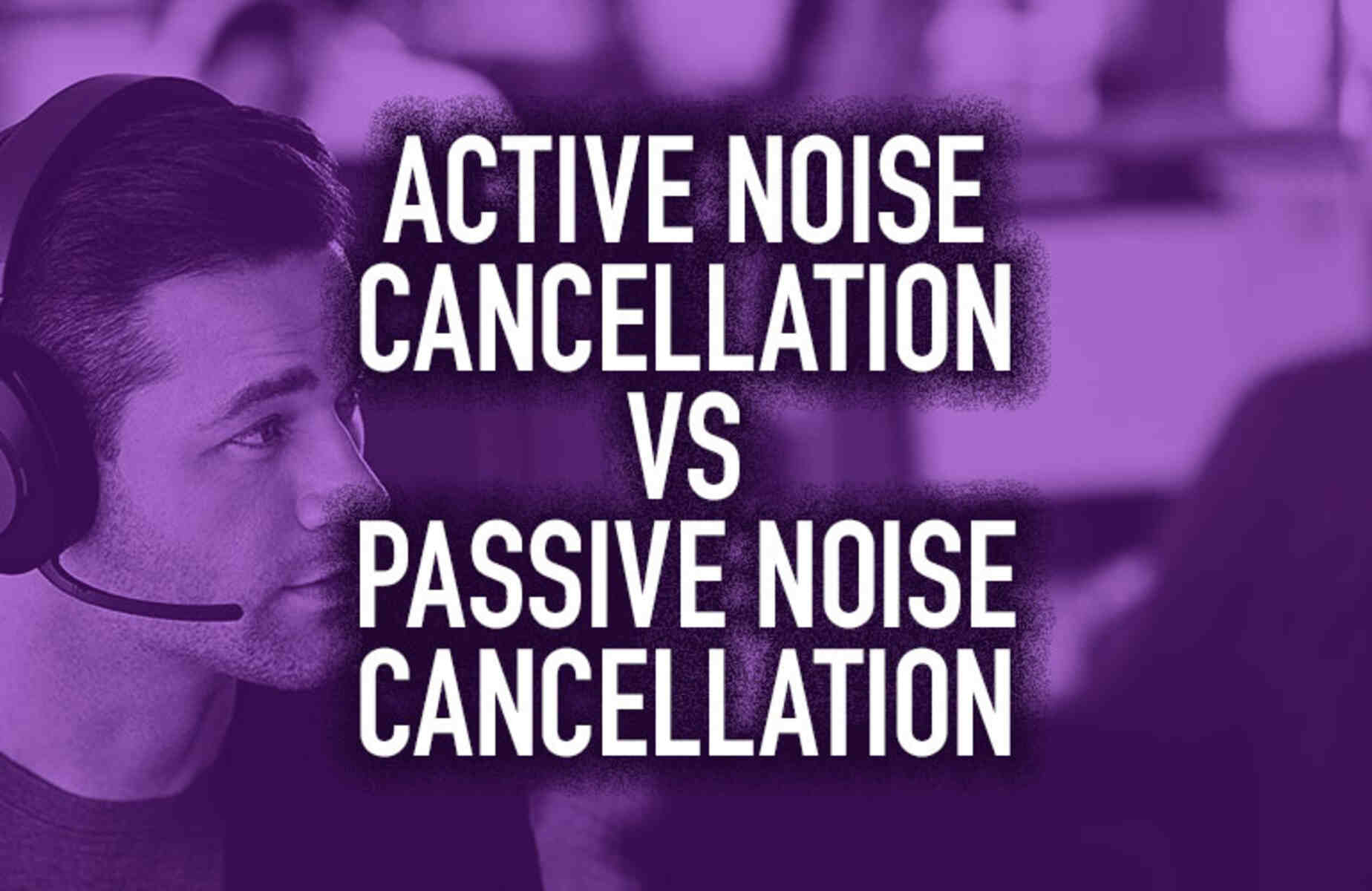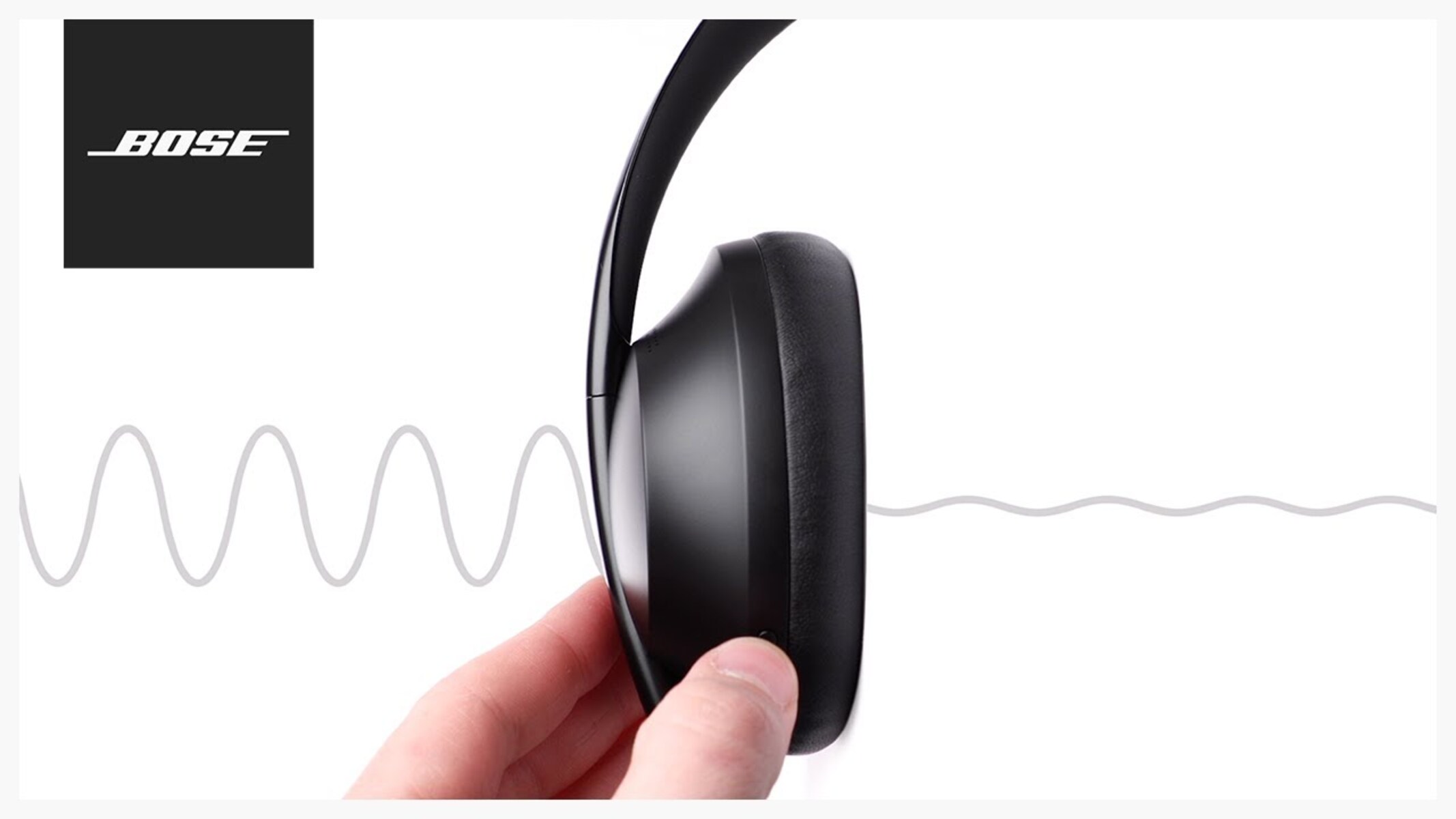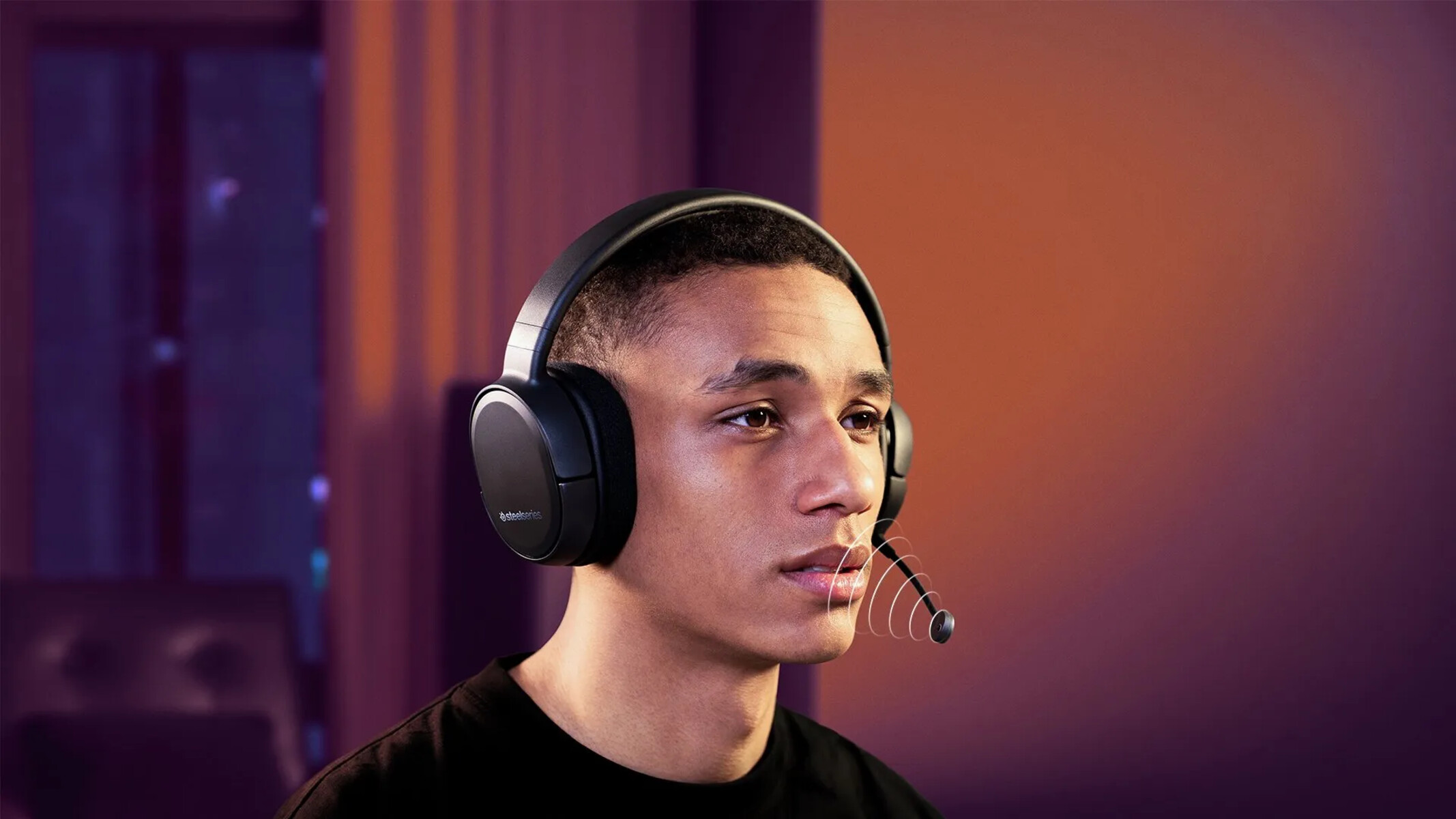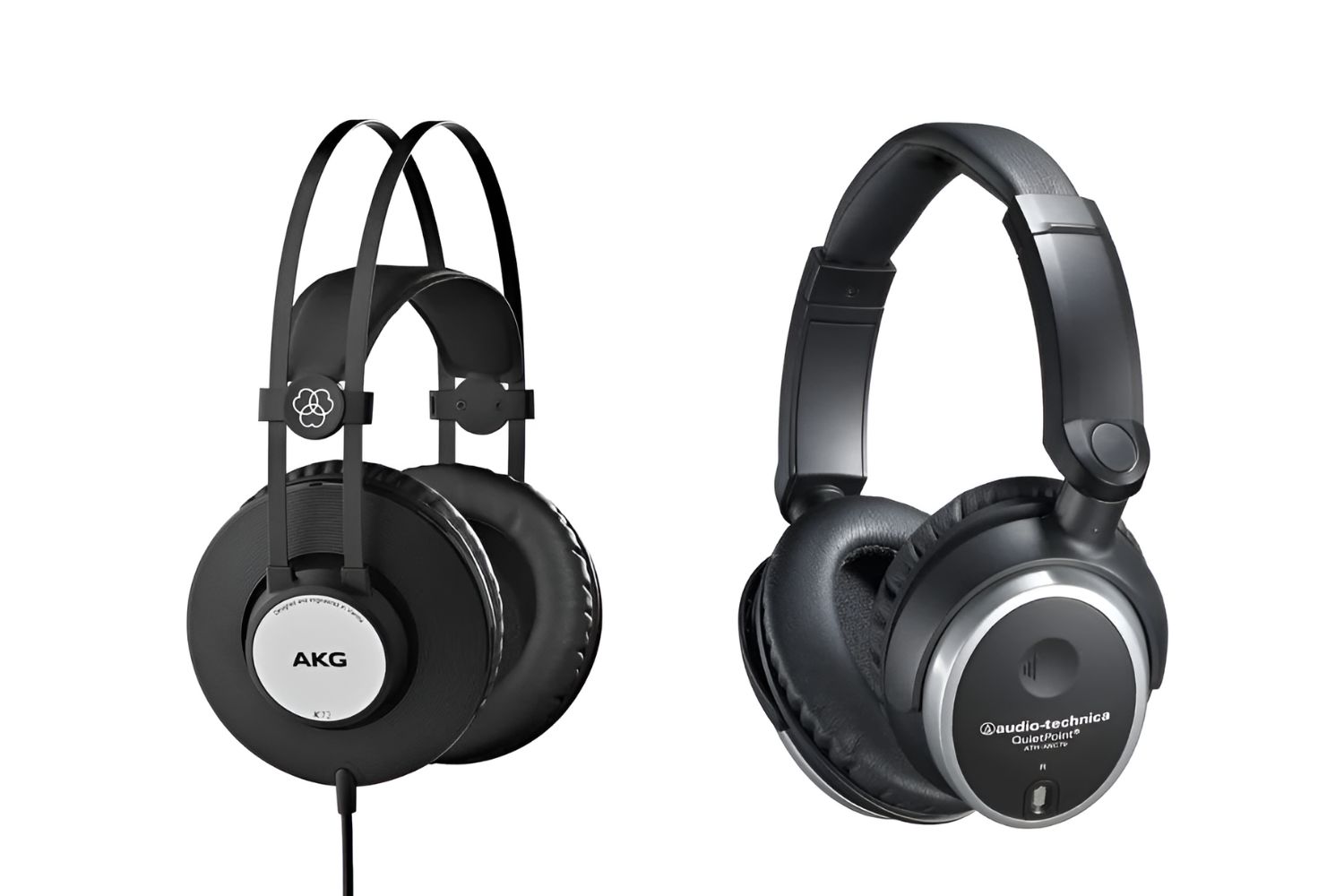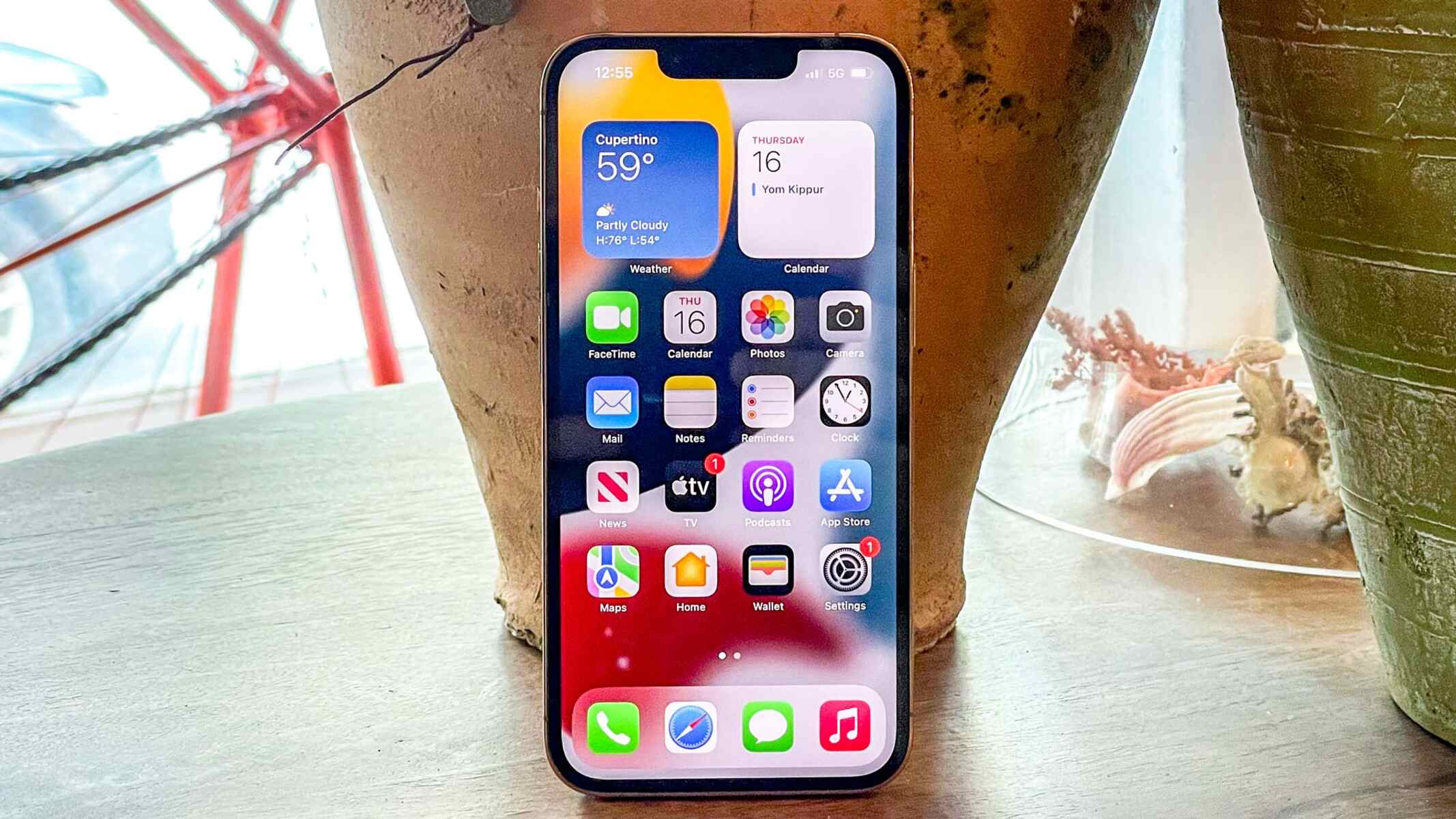What Is Active Noise Cancellation?
Active Noise Cancellation (ANC) is a technology that is designed to reduce or eliminate unwanted background noise in a given environment. It is commonly used in headphones, earphones, and other audio devices to create a more immersive listening experience. ANC works by using microphones to detect outside noise and then producing an opposing sound wave to cancel it out.
Unlike passive noise cancellation, which relies on physical barriers to block or reduce noise, active noise cancellation actively counters the noise by generating an anti-noise signal. This allows users to enjoy their audio content without being interrupted or distracted by external sounds such as traffic, conversations, or airplane engines.
How Does Active Noise Cancellation Work?
The process of active noise cancellation involves several key components. First, microphones are strategically placed to capture the ambient sound around the listener. These microphones pick up the incoming sound waves, analyze them, and determine the amplitude and frequency characteristics of the noise.
Next, the ANC circuitry generates an anti-noise signal that is precisely tailored to match the properties of the detected ambient noise. This anti-noise signal is then fed into the headphones or earphones in real-time, where it combines with the original audio content.
The anti-noise signal effectively cancels out or reduces the unwanted background noise, allowing the listener to focus on their desired audio. This process happens in a fraction of a second, allowing for seamless and uninterrupted listening.
Benefits of Active Noise Cancellation
Active noise cancellation offers several benefits that enhance the listening experience:
- Improved audio quality: By effectively reducing background noise, ANC allows for clearer and more detailed audio reproduction.
- Enhanced focus: ANC creates a quieter environment, which enables users to concentrate on their audio content without distractions.
- Reduced fatigue: The elimination of constant background noise can help reduce listener fatigue during long listening sessions.
- Protection of hearing: ANC can help prevent the need to raise the volume to compensate for external noise, thus reducing the risk of hearing damage.
Drawbacks of Active Noise Cancellation
While active noise cancellation has numerous benefits, it is important to consider the limitations as well:
- Power consumption: ANC requires additional power to operate, which can reduce battery life in wireless devices.
- Sound quality compromise: In some cases, ANC may introduce artifacts or alter the audio quality, although advancements in technology have significantly minimized this issue.
- Higher cost: ANC technology adds to the manufacturing cost of audio devices, resulting in higher prices compared to non-ANC alternatives.
Common Applications of Active Noise Cancellation
Active noise cancellation is widely used in various applications, including:
- Headphones and earphones: ANC is commonly found in high-end headphones and earphones, delivering a premium listening experience.
- Airplanes and public transportation: ANC is utilized in aircraft and public transportation systems to reduce engine noise and create a quieter and more comfortable atmosphere for passengers.
- Office environments: ANC can be incorporated into office headsets to minimize distractions and improve productivity in noisy workspaces.
Active noise cancellation is an innovative technology that continues to improve and redefine the way we listen to audio content. Its ability to reduce unwanted background noise can greatly enhance the overall listening experience, making it a sought-after feature in many audio devices.
How Does Active Noise Cancellation Work?
Active Noise Cancellation (ANC) is a technology that uses a combination of microphones, audio processing, and speakers to reduce or eliminate unwanted background noise. By understanding the fundamental principles behind ANC, we can appreciate how this innovative technology works.
The process of active noise cancellation involves several key components. First, microphones are strategically placed to capture the ambient sound around the listener. These microphones pick up the incoming sound waves, analyzing them to determine the amplitude and frequency characteristics of the noise.
Next, the ANC circuitry generates an anti-noise signal that is precisely tailored to match the properties of the detected ambient noise. This anti-noise signal is then fed into the headphones or earphones in real-time, where it combines with the original audio content.
The anti-noise signal effectively cancels out or reduces the unwanted background noise, allowing the listener to focus on their desired audio. This cancellation works by creating destructive interference, where the anti-noise signal and the ambient noise waves combine and cancel each other out.
It is important to note that active noise cancellation is most effective for continuous or repetitive sounds, such as the hum of an airplane engine or the drone of a crowd. These types of sounds have predictable patterns, making it easier to generate the appropriate anti-noise signal.
The ANC system continuously monitors the environment and adjusts the anti-noise signal accordingly, ensuring optimal cancellation even as the noise characteristics change. This adaptive nature allows ANC to effectively reduce a wide range of background noises.
Additionally, ANC technology can be combined with passive noise-cancelling measures to enhance its effectiveness. Passive noise cancellation relies on physical barriers, such as earcup padding or in-ear seals, to block or reduce noise. When combined with active noise cancellation, this dual approach further improves the overall noise reduction performance.
It is worth mentioning that ANC systems are not perfect and have limitations. Some sounds, such as sudden loud noises or speech, may not be fully canceled by ANC alone. However, advancements in ANC technology and algorithmic processing techniques are continuously improving its capabilities.
Active noise cancellation has become increasingly sophisticated over the years, allowing for more immersive, distraction-free listening experiences. Whether it’s for reducing the noise during a flight or creating a quiet environment in a bustling office, ANC has revolutionized the way we can enjoy audio content and focus on what matters most.
Benefits of Active Noise Cancellation
Active Noise Cancellation (ANC) offers numerous benefits that significantly enhance the listening experience for users. Let’s explore some of the advantages of using ANC technology.
- Improved audio quality: One of the primary benefits of ANC is that it enhances the audio quality by reducing background noise. By canceling out unwanted sounds, ANC allows for clearer and more detailed audio reproduction. This is especially beneficial in environments with high levels of ambient noise, such as airplanes or crowded spaces.
- Enhanced focus: ANC creates a quieter environment by filtering out distracting sounds. Whether you’re studying, working, or simply enjoying your favorite music, ANC technology enables you to concentrate on your audio content without external distractions. This can significantly improve productivity and the overall listening experience.
- Reduced fatigue: Constant exposure to background noise can lead to listener fatigue over time. ANC helps alleviate this issue by eliminating or reducing the need to constantly adjust volume levels to compensate for external noise. By creating a more pleasant and stress-free listening environment, ANC reduces listener fatigue during long listening sessions.
- Protection of hearing: Excessive exposure to loud noises can potentially harm your hearing. ANC technology can help prevent the need to raise the volume to overcome external noise, as it actively reduces the impact of background sounds. By maintaining a comfortable listening level, ANC contributes to the overall health and safety of your hearing.
- Personalized listening experience: Some ANC devices offer customizable settings and modes that allow users to fine-tune the level of noise cancellation. This feature enables you to adjust the ANC intensity according to your preference and the specific environment you’re in, giving you control over your listening experience.
ANC technology continues to evolve and improve, with advancements in microphone technology, signal processing algorithms, and hardware design. As a result, the benefits of ANC are becoming more accessible and effective for a wider range of users.
It is important to note that the performance and effectiveness of ANC can vary between devices and brands. When considering ANC-enabled headphones or earphones, it’s advisable to research and read reviews to ensure you select a product that aligns with your specific needs and preferences.
Whether you’re a frequent traveler, a student in a noisy environment, or someone who simply values uninterrupted and high-quality audio experiences, active noise cancellation technology is undoubtedly a game-changer. With its ability to enhance audio quality, promote focus, reduce fatigue, and protect hearing, ANC allows you to immerse yourself fully in your audio content without the interference of unwanted background noise.
Drawbacks of Active Noise Cancellation
While Active Noise Cancellation (ANC) technology offers numerous benefits, it is important to consider its drawbacks and limitations. Understanding these limitations can help users make informed decisions when using ANC-enabled devices. Let’s explore some of the drawbacks associated with ANC technology.
- Power consumption: ANC requires additional power to operate, which can impact the battery life of wireless devices. Activating the ANC feature can decrease the overall playback time or talk time of devices such as headphones or earphones. It is essential to consider the power requirements and battery life when using ANC-enabled devices, especially during long journeys or extended use.
- Sound quality compromise: While ANC technology has improved significantly, it can still have an impact on the overall sound quality. In some cases, ANC may introduce artifacts or alter the audio reproduction. This compromise in sound quality is more noticeable in lower-end ANC devices or in certain frequency ranges. However, higher-quality ANC devices have minimized this issue through advancements in technology and improved audio processing algorithms.
- Higher cost: ANC technology adds to the manufacturing cost of audio devices, resulting in higher prices compared to non-ANC alternatives. The inclusion of multiple microphones, dedicated ANC circuitry, and advanced processing capabilities increases the production cost. When considering ANC-enabled devices, users should be prepared for a higher upfront investment.
- Ambient noise dependency: ANC technology is most effective for continuous or repetitive sounds, such as engine noise or the hum of an air conditioner. Sudden loud noises or speech can be more challenging to cancel out completely. While ANC reduces the impact of background noise, it may not entirely block all sounds in every situation. Users should be aware that ANC may not provide complete isolation from all types of environmental noise.
- Physical discomfort: ANC headphones or earphones can sometimes create a slight pressure sensation on the ears due to the sealing required to block out outside noise. While this effect varies from person to person, some individuals may find it uncomfortable to wear ANC devices for extended periods. It is important to try out different ANC devices and find ones that provide a comfortable fit.
While ANC technology has its drawbacks, it is crucial to recognize that advancements are continually being made to address these limitations. Manufacturers strive to improve power efficiency, sound quality, and user comfort. It is recommended to thoroughly research and read reviews when considering ANC-enabled devices to ensure they align with your specific needs and preferences.
Despite these drawbacks, active noise cancellation technology remains a valuable tool for creating a more immersive and focused audio experience, particularly in noisy environments. By understanding the limitations of ANC, users can make informed decisions and maximize their enjoyment of audio content in various settings.
Common Applications of Active Noise Cancellation
Active Noise Cancellation (ANC) technology has found widespread application in various industries and settings where reducing or eliminating background noise is beneficial. Let’s explore some of the common applications of ANC across different domains:
- Headphones and earphones: ANC is predominantly used in headphones and earphones, providing users with a premium listening experience. Whether it’s enjoying music, podcasts, or watching movies, ANC-enabled headphones offer superior sound quality by minimizing external distractions.
- Aircraft and public transportation: ANC plays a vital role in the aviation and transportation industry. It helps reduce the impact of engine noise and other sources of noise within the cabin, delivering a more peaceful and comfortable travel experience. ANC technology allows passengers to enjoy entertainment or work without the constant disturbance of surrounding noise.
- Office environments: Open office layouts can be disruptive and noisy, impacting productivity and concentration. ANC is incorporated into office headsets to help minimize distractions and create a quieter atmosphere for employees. By reducing background noise, ANC enables individuals to focus better and engage in phone calls, video conferences, and other work-related activities without disruptions.
- Study and learning environments: ANC can be particularly useful for students and learners who need a quiet space to concentrate. Whether studying in a busy cafe or a bustling library, ANC-equipped headphones or earphones help create a more conducive environment by isolating ambient noise and allowing learners to focus on their educational materials.
- Call center and customer service operations: ANC headsets find extensive use in call centers and customer service operations. The technology minimizes background noise, allowing customer service representatives to communicate clearly with customers without interruptions. This improves call quality, enhances customer satisfaction, and boosts overall productivity in such work environments.
- Construction and industrial settings: ANC is employed in protective earmuffs and earplugs used in construction and industrial settings. It helps reduce the impact of loud machinery and other sources of noise exposure, protecting workers’ hearing health and improving their overall comfort during long work hours.
These are just a few examples of the common applications of ANC. As the technology continues to advance and become more accessible, we can expect to see its integration in various other domains such as healthcare, public spaces, and even personal communication devices.
Active noise cancellation has revolutionized the way we experience sound. By effectively reducing unwanted background noise, ANC allows us to immerse ourselves in audio content, enhance productivity, and enjoy a more peaceful environment in various settings.
What Is Passive Noise Cancellation?
Passive Noise Cancellation, also known as Noise Isolation, is a method of reducing or blocking out unwanted background noise by using physical barriers and materials. Unlike Active Noise Cancellation (ANC), which uses technology to actively counter noise, passive noise cancellation relies on the design and construction of the device itself to attenuate the noise.
How Does Passive Noise Cancellation Work?
Passive noise cancellation works by creating a physical barrier or seal between the user’s ears and the surrounding environment. This barrier helps block or reduce external noise by preventing its entry into the ear canal.
In headphones and earphones, passive noise cancellation is achieved through various methods:
- Over-Ear Design: Over-ear headphones have large ear cups that encompass the entire ear, creating a physical barrier that prevents external sounds from reaching the ears. The ear cups are often cushioned with materials that further isolate the ears from surrounding noise.
- In-Ear Design: In-ear headphones or earphones use ear tips that fit snugly inside the ear canal. This creates a seal that blocks out external noise. The effectiveness of passive noise cancellation in in-ear designs depends on the quality and fit of the ear tips.
- Materials and Cushioning: Passive noise cancellation can also be enhanced through the use of sound-absorbing materials and cushioning in the headphones or earphones. These materials help absorb and dampen external noise, reducing its impact on the user’s listening experience.
Benefits of Passive Noise Cancellation
Passive noise cancellation offers several benefits:
- Simple and Reliable: Passive noise cancellation does not rely on complex electronics or power sources, making it a straightforward and reliable method of reducing noise.
- No Power Dependency: Unlike ANC, passive noise cancellation does not require any power source. This allows users to enjoy uninterrupted listening without worrying about battery life or charging.
- Cost-Effective: Devices with passive noise cancellation tend to be more affordable compared to ANC-enabled counterparts. This makes passive noise cancellation a practical choice for those on a budget.
- Consistent Audio Quality: Since passive noise cancellation does not involve active processing or generating counter-noise, it does not impact the audio quality. Users can enjoy audio reproduction with a consistent and unaltered sound signature.
Drawbacks of Passive Noise Cancellation
While passive noise cancellation has its benefits, it also has some limitations:
- Reduced Noise Reduction: Passive noise cancellation is generally less effective than active noise cancellation, especially in environments with loud or unpredictable noise. It struggles to completely eliminate certain frequencies or sudden disruptive sounds.
- Dependent on Design and Fit: The effectiveness of passive noise cancellation is highly dependent on the design and fit of the headphones or earphones. If the seal is not tight or the ear cups do not fully enclose the ears, external noise may still penetrate through.
- Limitations in Open-Back Design: Open-back headphones, which have vents or openings in the ear cups, do not provide significant passive noise cancellation as their design is intended to allow sound to pass through. This design choice prioritizes acoustic transparency over noise isolation.
Despite these limitations, passive noise cancellation remains a popular and effective method of reducing unwanted background noise. It is widely used in headphones, earphones, and other audio devices, providing users with a more immersive and focused audio experience.
How Does Passive Noise Cancellation Work?
Passive Noise Cancellation, also known as Noise Isolation, is a method of reducing or blocking out unwanted background noise without the use of active technology. This approach relies on physical barriers and materials to attenuate noise and create a quieter listening environment.
The process of passive noise cancellation involves several key principles:
Design and Structure: Devices with passive noise cancellation, such as headphones and earphones, are designed to minimize the transmission of external sound waves to the user’s ears. Different design features contribute to this blocking or reduction of noise.
Over-Ear Design: Over-ear headphones have large ear cups that fully enclose the ears. The ear cups are often padded with soft materials or foam, creating a physical barrier between the ears and the surrounding environment. This design helps prevent external noise from reaching the ears, resulting in passive noise cancellation.
In-Ear Design: In-ear headphones or earphones utilize ear tips that fit snugly inside the ear canal. These ear tips create a seal that isolates the ear from external noise. The tight fit prevents sounds from penetrating the ear canal, effectively reducing background noise.
Materials and Cushioning: Passive noise cancellation can also be enhanced through the use of sound-absorbing materials in the construction of headphones or earphones. These materials absorb or dampen incoming sound waves, minimizing their impact on the user’s listening experience. Additionally, cushioning or padding in the ear cups or ear tips helps enhance the passive noise cancellation by further isolating the ears from external noise.
Passive noise cancellation works best for reducing continuous or low-frequency sounds, such as the hum of engines or air conditioning units. It is less effective at canceling out sudden loud noises or higher-frequency sounds, as these can still reach the ears to some extent.
The effectiveness of passive noise cancellation is also influenced by the fit of the headphones or earphones. A proper seal or tight fit ensures that external noise is effectively blocked or minimized. It is crucial to choose the right size ear tips or adjustable headbands to achieve optimal passive noise cancellation.
Passive noise cancellation does not require any power source or active processing. It simply relies on the physical design and materials of the device. This makes it a straightforward and reliable method of reducing background noise without any trade-offs in sound quality or additional power consumption.
Despite its effectiveness, it is important to note that passive noise cancellation alone may not completely eliminate all external noise. It provides varying levels of noise reduction, depending on the design, fit, and the nature of the surrounding environment. To achieve a higher level of noise isolation, a combination of passive and active noise cancellation techniques can be employed.
Overall, passive noise cancellation offers a practical and cost-effective way to minimize unwanted background noise. It is widely used in headphones, earphones, and other audio devices, allowing users to enjoy their audio content with reduced distractions and enhanced focus.
Benefits of Passive Noise Cancellation
Passive Noise Cancellation, also known as Noise Isolation, offers several benefits that enhance the listening experience and provide a quieter environment for users. Let’s explore some of the advantages of using passive noise cancellation:
- Effective Noise Reduction: Passive noise cancellation is highly effective at reducing or blocking out unwanted background noise. By utilizing physical barriers and materials, such as well-fitting ear cups or in-ear tips, it prevents external sounds from reaching the ears. This isolation enables users to enjoy their audio content without distractions from surrounding noise, creating a more immersive listening experience.
- No Power Dependency: Unlike active noise cancellation (ANC) which requires power, passive noise cancellation operates without the need for batteries or charging. This makes it a convenient and hassle-free solution as there is no need to worry about power consumption or running out of battery during use. It also makes passive noise cancellation devices more portable and suitable for long periods of continuous listening.
- Consistent Sound Quality: Passive noise cancellation does not involve active processing or the generation of counter-noise, which can potentially impact sound quality. With passive noise cancellation, users can enjoy their audio content with a consistent sound signature, ensuring that the original audio remains unchanged.
- Affordability: Passive noise cancellation is often more cost-effective compared to active noise cancellation. Devices with passive noise cancellation tend to be more affordable, making it accessible to a wider range of users, especially those on a budget.
- Compatibility: Passive noise cancellation is compatible with a wide range of audio devices, including headphones, earphones, and earplugs. This versatility allows users to integrate passive noise cancellation into their existing audio setup without the need for additional equipment or compatibility concerns.
- Durability: Passive noise cancellation devices tend to be more durable and robust due to their simple design and lack of active electronics. This makes them less prone to malfunction or damage, ensuring longevity and reliable performance over time.
Passive noise cancellation is valuable in various scenarios, including travel, work, study, and leisure activities. It enhances the overall listening experience by creating a more peaceful and focused environment, enabling users to fully immerse themselves in their audio content.
It is important to note that the effectiveness of passive noise cancellation can vary depending on factors such as the quality of the device, the fit of the ear cups or ear tips, and the nature of the surrounding noise. Finding the right fit and selecting high-quality passive noise cancellation devices can significantly enhance the benefits and noise reduction experienced by users.
Whether it’s enjoying music during a commute, working in a noisy office, or studying in a bustling coffee shop, passive noise cancellation provides valuable benefits that contribute to a more enjoyable and immersive audio experience.
Drawbacks of Passive Noise Cancellation
While passive noise cancellation offers significant benefits, it is essential to consider its limitations and drawbacks. Understanding these drawbacks can help users make informed decisions regarding the use of passive noise cancellation devices. Let’s explore some of the drawbacks associated with passive noise cancellation:
- Limited Noise Reduction: Passive noise cancellation is less effective at reducing certain types of noise compared to active noise cancellation (ANC). It is particularly less effective at canceling out sudden loud noises or higher-frequency sounds. While passive noise cancellation can provide a significant reduction in continuous background noise, it may not completely eliminate all external noise sources.
- Dependent on Fit and Design: The effectiveness of passive noise cancellation depends heavily on the fit and design of the device. For example, in-ear headphones or earphones require a tight seal with the ear canal to achieve optimal noise isolation. If the fit is not secure, external noise may still penetrate through, reducing the effectiveness of passive noise cancellation. Likewise, the design of over-ear headphones should properly enclose the ears to create a physical barrier against external noise.
- Comfort and Fit: Achieving a proper fit with passive noise cancellation devices can be challenging for some individuals. In-ear headphones or earphones may cause discomfort or ear fatigue, especially during extended use. Over-ear headphones that apply excessive pressure on the ears can also lead to discomfort and affect the listening experience. Finding the right balance of fit and comfort is crucial for maximizing the effectiveness of passive noise cancellation.
- Internal Resonance: Some passive noise cancellation devices, especially in-ear headphones, may introduce internal resonances. These resonances can cause certain frequencies to be amplified or distorted, affecting the overall sound quality. While advancements in design and materials have mitigated this issue in many devices, it is still a consideration when selecting passive noise cancellation products.
- External Sound Leakage: Passive noise cancellation primarily focuses on reducing noise for the listener. However, it does not prevent sound leakage from the device to the surrounding environment. This can be a concern for those in shared spaces or when using headphones in quiet environments where sound leakage might disturb others nearby.
Despite these limitations, passive noise cancellation remains a valuable method for reducing unwanted background noise in various situations. Its simplicity, cost-effectiveness, and compatibility with a wide range of devices make it an accessible solution for many users.
It’s important to consider individual preferences, specific noise environments, and intended usage scenarios when choosing between passive and active noise cancellation. Both approaches have their advantages and limitations, and selecting the most appropriate option depends on personal needs and priorities.
By understanding the drawbacks of passive noise cancellation, users can make informed decisions and manage their expectations regarding noise reduction and the overall listening experience.
Common Applications of Passive Noise Cancellation
Passive Noise Cancellation, also known as Noise Isolation, is a widely utilized method for reducing or blocking out unwanted background noise. It finds application in various domains where noise reduction is crucial for enhanced focus, productivity, and enjoyment. Let’s explore some common applications of passive noise cancellation:
- Music and Entertainment: Passive noise cancellation is commonly employed in headphones and earphones designed for music enjoyment and entertainment purposes. By minimizing external noise, passive noise cancellation allows users to fully immerse themselves in their favorite music or audio content without distractions.
- Work and Study: Passive noise cancellation is especially beneficial in office environments or study settings where concentration is crucial. Headphones or earphones with passive noise cancellation help minimize distractions from coworkers, office equipment, or public transportation noise, allowing individuals to focus on their tasks or study materials.
- Travel and Commuting: Passengers using public transportation or frequent travelers often face high levels of ambient noise. Passive noise cancellation in headphones or earphones enables a quieter and more enjoyable travel experience by reducing the impact of engine noise, conversations, or surrounding environmental sounds.
- Airplane and Train Travel: Airplanes and trains can generate significant noise during travel. Passive noise cancellation is essential in mitigating the engine noise, cabin sounds, and other sources of disruption. By blocking out these noises, passive noise cancellation enables a more comfortable and peaceful journey for passengers.
- Public Spaces: Passive noise cancellation is valuable in public spaces such as libraries, cafes, or co-working spaces. By reducing external noise, individuals can create a personal audio oasis, allowing them to work, study, or relax comfortably in environments that may otherwise be noisy or disruptive.
- Noise-Sensitive Work Environments: Passive noise cancellation is beneficial in occupations that require focus and concentration, such as audio editing, sound mixing, medical transcription, or call centers. Headphones with passive noise cancellation help professionals in these fields to isolate themselves from external noise, enabling better accuracy and judgment in their work.
- Sleep and Rest: Passive noise cancellation can be useful for promoting a peaceful and uninterrupted sleep environment. Devices such as noise-blocking earplugs or sleep headphones with passive noise cancellation can help reduce the impact of snoring, traffic noise, or other disturbances, facilitating a more restful sleep experience.
These are just a few examples of the common applications of passive noise cancellation. Its versatility and effectiveness make it indispensable for individuals seeking to minimize unwanted noise and create a more immersive and focused experience in various aspects of life.
When selecting passive noise cancellation devices, it is essential to consider factors such as comfort, fit, and the specific noise environments to ensure optimal noise reduction and a satisfactory listening experience.
Active Noise Cancellation vs Passive Noise Cancellation: A Comparison
Active Noise Cancellation (ANC) and Passive Noise Cancellation (PNC) are two distinct methods for reducing or blocking out unwanted background noise. While both approaches aim to provide a quieter listening experience, there are notable differences between them. Let’s compare the features and characteristics of active and passive noise cancellation:
Noise Reduction Mechanism:
– Active Noise Cancellation: ANC utilizes microphones to detect ambient noise and generates an anti-noise signal to counteract the unwanted sounds. This technology actively cancels out noise by producing sound waves that interfere destructively with incoming noise waves.
– Passive Noise Cancellation: PNC relies on physical barriers, materials, and design features to block or reduce external noise. It involves the use of well-fitting ear cups, in-ear tips, or sound-absorbing materials to prevent noise from reaching the ears.
Noise Reduction Effectiveness:
– Active Noise Cancellation: ANC is highly effective at reducing constant or repetitive sounds, such as aircraft engine noise or the hum of an air conditioner. It can significantly attenuate lower-frequency noise and provide a more immersive listening experience. However, ANC may not be as effective at canceling out sudden loud noises or higher-frequency sounds.
– Passive Noise Cancellation: PNC is generally effective at reducing a wide range of background noise, including both continuous and intermittent sounds. It provides a significant reduction in noise, especially in situations where the fit and design of the device create a tight seal and physical barrier against external noise.
Power Requirement:
– Active Noise Cancellation: ANC requires power to operate as it involves processing sound signals and generating counteractive sound waves. This power requirement can come from built-in batteries or through a wired connection to a power source in some cases.
– Passive Noise Cancellation: PNC does not require any power source, making it a reliable and power-efficient solution. It operates solely based on the physical design and materials of the device.
Audio Quality:
– Active Noise Cancellation: ANC has the potential to alter the sound quality, especially in lower-end devices or when dealing with specific frequency ranges. However, advancements in ANC technology and improved audio processing algorithms have significantly reduced this issue, allowing for more transparent and high-quality sound reproduction in many ANC devices.
– Passive Noise Cancellation: PNC does not interfere with the audio quality since it does not involve any active processing. The original audio content remains unchanged, resulting in consistent and unaltered sound reproduction.
Cost:
– Active Noise Cancellation: ANC technology adds to the manufacturing cost of audio devices, making ANC-enabled headphones or earphones generally more expensive compared to non-ANC alternatives.
– Passive Noise Cancellation: PNC is typically less expensive since it does not require active technology or complex processing components. Passive noise cancellation devices are more accessible and budget-friendly.
Compatibility:
– Active Noise Cancellation: ANC can be incorporated into a wide range of audio devices, including headphones, earphones, headsets, and even in-vehicle audio systems. It requires specific ANC circuitry and advanced signal processing capabilities within the device itself.
– Passive Noise Cancellation: PNC doesn’t necessitate any specialized components or circuitry, making it compatible with various audio devices, including headphones, earphones, earplugs, and more.
Active Noise Cancellation and Passive Noise Cancellation each have their advantages and limitations. Choosing between the two depends on individual preferences, specific noise environments, and budget considerations. Active noise cancellation is particularly beneficial in scenarios where constant or repetitive noise reduction is desired, while passive noise cancellation offers a reliable and cost-effective solution for reducing a wide range of background noise. Both technologies contribute significantly to creating a more enjoyable and immersive audio experience, providing users with quiet spaces to focus, relax, and enjoy their favorite content.
Conclusion
Noise cancellation technology, whether active or passive, plays a significant role in enhancing the listening experience and creating a more focused and immersive environment. Both Active Noise Cancellation (ANC) and Passive Noise Cancellation (PNC) have distinct features and offer unique benefits.
Active Noise Cancellation, with its ability to generate anti-noise signals and actively counter background noise, is particularly effective in reducing constant or repetitive sounds. ANC technology has advanced over the years, providing users with improved audio quality and greater control over their listening experience. While ANC requires power and may alter the sound quality to some extent, it remains a sought-after feature in high-end headphones, earphones, and other audio devices.
Passive Noise Cancellation, on the other hand, relies on physical barriers and materials to block or reduce external noise. This method does not require power and maintains consistent audio quality. Passive noise cancellation is effective in reducing a wide range of background noise and finds application in various settings, from work and study environments to travel and entertainment.
It is important for individuals to consider their specific needs, preferences, and the noise environments they encounter when choosing between active and passive noise cancellation. Factors such as comfort, fit, noise reduction effectiveness, power requirements, and cost should also be taken into account.
Both ANC and PNC have revolutionized the way we experience audio content. They provide a solution to the challenges posed by external noise and allow for a more immersive, focused, and enjoyable listening experience. Whether you desire the advanced noise reduction capabilities of active noise cancellation or the simplicity and affordability of passive noise cancellation, incorporating these technologies into your audio devices can greatly enhance the way you enjoy music, engage in work or study, and travel.
As technology continues to evolve, we can expect further advancements in both active and passive noise cancellation, paving the way for even more immersive and efficient noise reduction solutions in the future.







